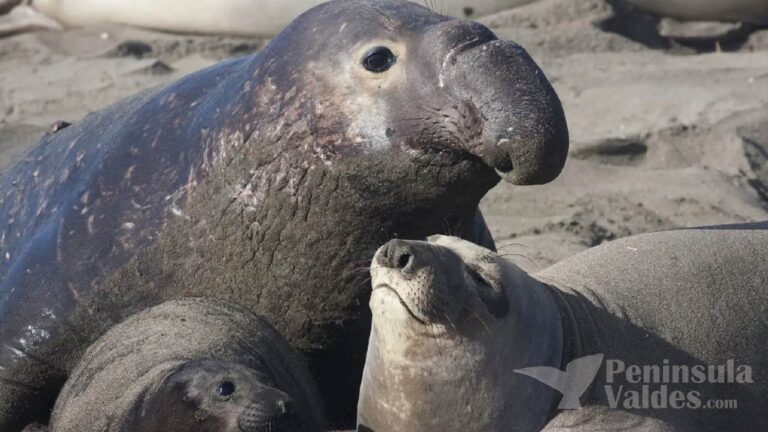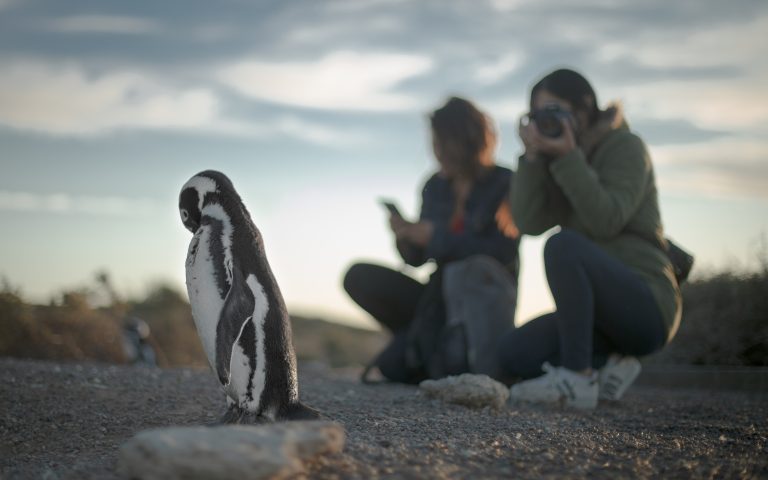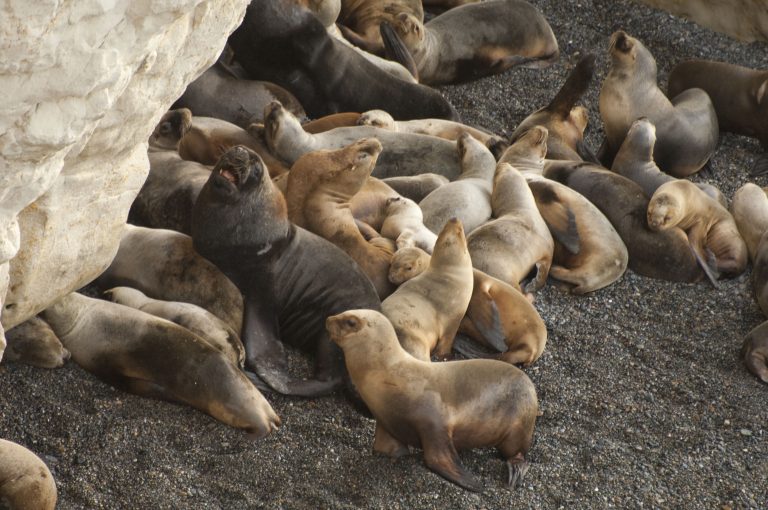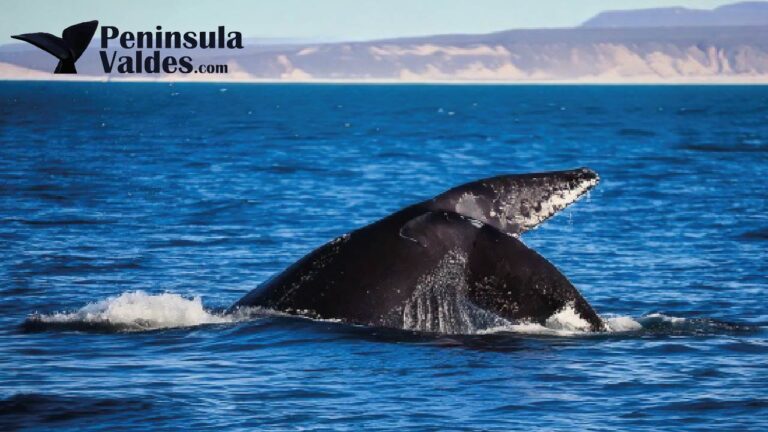Sea Elephant or Elephant Seal
One of the interesting animals you can enjoy during your visit to Peninsula Valdes is the Sea Elephant, also called Southern Elephant Seal. Peninsula Valdes is the only continental colony of this species, that hosts around 20.000 sea elephants during the reproductive season. Dominant males can have harems of up to 100 elephants. Males arrive at Peninsula Vales in August and females in September. Sea elephants spend most of the year at sea and only approach the coast to molt their fur and reproduce. You can see similar fights between males to see who is the male “alpha” of the harem, but in these cases, there is physical contact.
Females nurse for 25 days their cubs, who then must undergo a fasting period of 30 to 90 days on the coast to finally venture out to sea in search of the first solid food. This feature is one of the most difficult for the young that leads to high mortality rates. Males are easily identified. The leader of the herd or harem of 100 females or more, is referred to as Alfa. Betha and Gamma are also males but with a lower rank. The latter is in charge of fertilizing the females Alfa has left aside.

SEA ELEPHANT or ELEPHANT SEALS: A bit more about these incredible animals
The southern elephant seal is found in the Southern Hemisphere on islands such as South Georgia and Macquarie Island, and on the coasts of New Zealand, South Africa, and Argentina in the Peninsula Valdés. In southern Chile, there is a small colony of 120 animals at Jackson Bay, Admiralty Sound (Seno Almirantazgo), Tierra del Fuego.
Elephant seals are marine mammals classified under the order Pinnipedia, which, in Latin, means feather- or fin-footed. Elephant seals are considered true seals and fall under the family Phocidae. Phocids (true seals) are characterized by having no external ear and reduced limbs. The reduction of their limbs helps them be more streamlined and move easily in the water. However, it makes navigating on land a bit difficult because they cannot turn their hind flippers forward to walk like the Otariids. In addition, the hind flipper of elephant seals has a lot of surface area, which helps propel them in the water. Elephant seals spend the majority of their time (90%) underwater in search of food and can cover 60 miles a day when they head out to sea. When elephant seals are born, they can weigh up to 80 pounds and reach lengths up to 4 feet. Sexual dimorphism is extreme, with male elephant seals weighing up to 10 times more than females and having a large proboscis.
Peninsula Valdes Tour With Estancia San Lorenzo
Discover the captivating wildlife of Peninsula Valdés with Estancia San Lorenzo. Penguin colonies and scenic landscapes await!
- Peninsula Valdes
From Price: USD 199
Northern and Southern Elephant Seals or Sea Elephants
The northern and southern elephant seal can be distinguished by various external features. On average, the southern elephant seal tends to be larger than the northern species. Adult male elephant seals belonging to the northern species tend to have a larger proboscis, and thick chest area with a red coloration compared to the southern species. Females do not have large proboscis and can be distinguished between species by looking at their nose characteristics. Southern females tend to have a smaller, blunt nose compared to northern females.
Dominant males arrive at potential breeding sites in November and will spend 3 months on the beach fasting to ensure that they can mate with as many females as possible. Male elephant seals use fighting, vocal noises, and different positions to determine who will be deemed the dominant male. When males reach 8 to 9 years of age, they have developed a pronounced long nose, in addition to a chest shield, which is thickened skin in their chest area. Showing off their noses, making loud vocalizations, and altering their posture are a few ways males show off their dominance. When battles come into play, seals will stand tall, and ram themselves into one another using their chest plates and sharp teeth.
When the pregnant females arrive, the dominating males have already selected their territory on the beach. Females cluster in groups called harems, which could consist of up to 50 females surrounding one alpha male. Outside of these groups, a beta bull is normally roaming around on the beach. The beta bull helps the alpha by preventing other males accessing the females. In return, the beta bull might have an opportunity to mate with one of the females while the alpha is occupied.
Birth on average only takes a few minutes, and the mother and pup have a connection due to each other’s unique smell and sound. The mothers will fast and nurse up to 28 days, providing their pups with rich milk. In the last two to three days, however, females will be ready to mate, and the dominant males will pounce on the opportunity. During this exhaustive process, males and females lose up to a third of their body weight during the breeding season. The gestation period for females is 11 months, and the pupping seasons last from mid-December through the middle of February. The new pups will spend up to ten additional weeks on land learning how to swim and dive
Punta Loma Sea Lions Natural Reserve
Embark on an unforgettable adventure. Encounter playful sea lions, admire breathtaking coastal views, and explore historic landmarks.
From Price: USD 50










